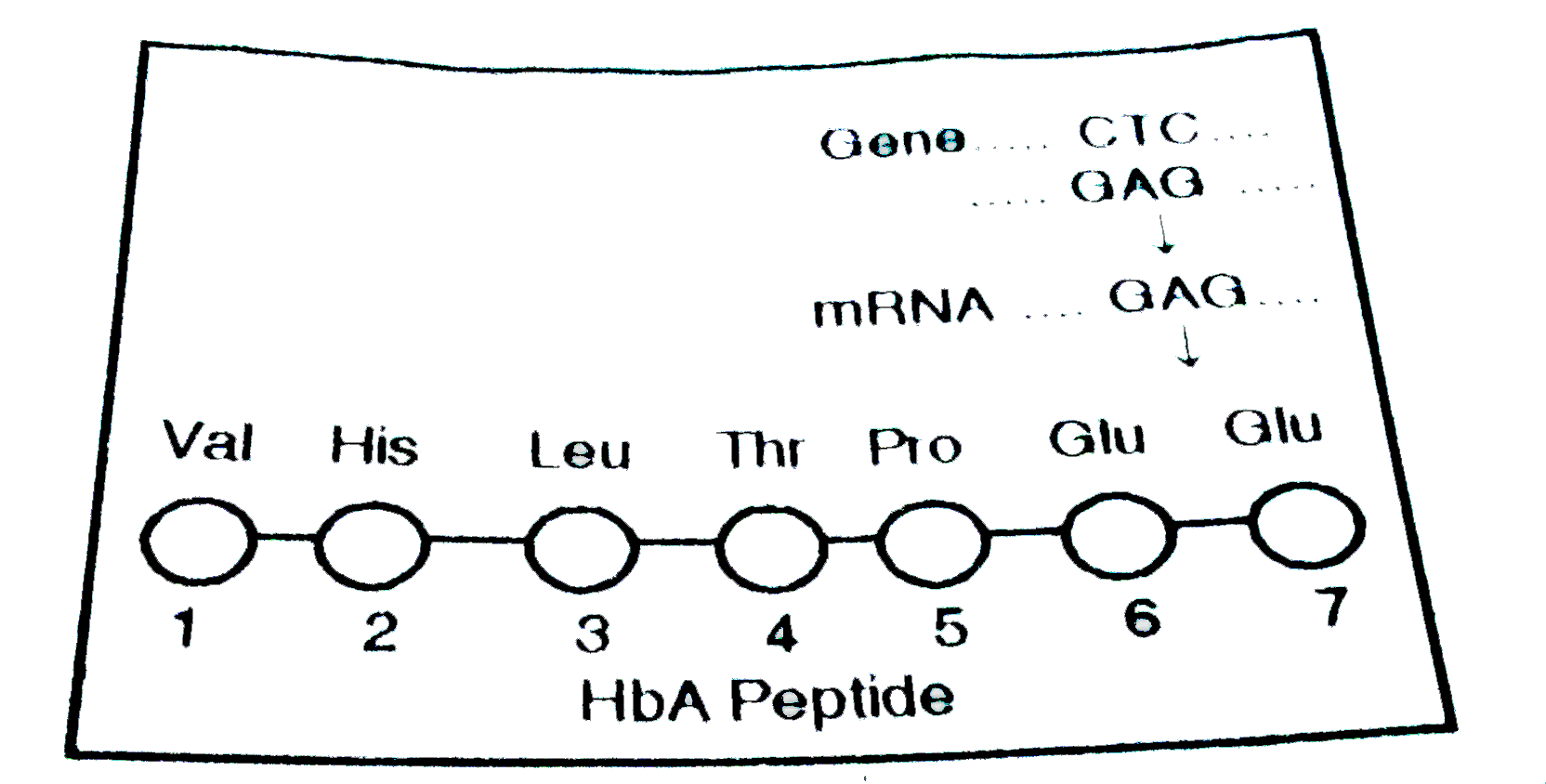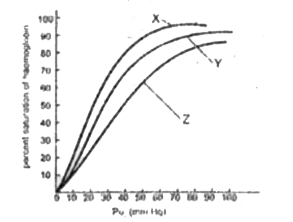Explain giving reasons. 'The presence of CO reduces the amount of haemoglobin available in the blood for carrying oxygen to the body cells'.
Step-by-Step Solution:
1. Understanding Hemoglobin and Its Function:
- Hemoglobin (Hb) is a protein found in red blood cells (RBCs) that is responsible for transporting oxygen from the lungs to the body cells and returning carbon dioxide from the cells back to the lungs.
2. Introduction of Carbon Monoxide (CO):
- Carbon monoxide is a colorless, odorless gas that can be produced from incomplete combustion of carbon-containing fuels.
3. Interaction Between CO and Hemoglobin:
- When carbon monoxide is present in the bloodstream, it competes with oxygen for binding sites on hemoglobin.
- CO binds to hemoglobin to form carboxyhemoglobin (HbCO) much more readily than oxygen does. In fact, CO binds to hemoglobin approximately 300 times more easily than oxygen.
4. Formation of Carboxyhemoglobin:
- The reaction can be represented as:
CO+Hb→HbCO
- This binding is reversible, but because CO has a much higher affinity for hemoglobin, it effectively reduces the amount of hemoglobin available to bind with oxygen.
5. Consequences of CO Binding:
- Since hemoglobin is occupied by carbon monoxide, there is less hemoglobin available to bind with oxygen.
- This leads to a reduced capacity of the blood to carry oxygen to the body cells.
6. Impact on Oxygen Transport:
- With less oxyhemoglobin (HbO2) being formed, the transport of oxygen to body tissues is significantly impaired.
- As a result, the body cells may not receive enough oxygen, which can lead to symptoms of oxygen deprivation, such as fatigue, headaches, and in severe cases, can be life-threatening.
Conclusion:
- The presence of carbon monoxide in the blood reduces the amount of hemoglobin available for carrying oxygen because it binds to hemoglobin more readily than oxygen, forming carboxyhemoglobin. This decreases the efficiency of oxygen transport to body cells.
---
- Hemoglobin (Hb) is a protein found in red blood cells (RBCs) that is responsible for transporting oxygen from the lungs to the body cells and returning carbon dioxide from the cells back to the lungs.
- Carbon monoxide is a colorless, odorless gas that can be produced from incomplete combustion of carbon-containing fuels.
- When carbon monoxide is present in the bloodstream, it competes with oxygen for binding sites on hemoglobin.
- CO binds to hemoglobin to form carboxyhemoglobin (HbCO) much more readily than oxygen does. In fact, CO binds to hemoglobin approximately 300 times more easily than oxygen.
- The reaction can be represented as:
CO+Hb→HbCO
- This binding is reversible, but because CO has a much higher affinity for hemoglobin, it effectively reduces the amount of hemoglobin available to bind with oxygen.
- Since hemoglobin is occupied by carbon monoxide, there is less hemoglobin available to bind with oxygen.
- This leads to a reduced capacity of the blood to carry oxygen to the body cells.
- With less oxyhemoglobin (HbO2) being formed, the transport of oxygen to body tissues is significantly impaired.
- As a result, the body cells may not receive enough oxygen, which can lead to symptoms of oxygen deprivation, such as fatigue, headaches, and in severe cases, can be life-threatening.
- The presence of carbon monoxide in the blood reduces the amount of hemoglobin available for carrying oxygen because it binds to hemoglobin more readily than oxygen, forming carboxyhemoglobin. This decreases the efficiency of oxygen transport to body cells.
Similar Questions
Name the following:
The gas that reduces oxygen carrying capacity of the blood.View Solution(a) State Huygen's principle . Using this principle draw a diagram to show how a plane wave front incident at the interface of the media gets refracted when it propagates from a rarer to a denser medium. Hence verify Snell's law of refraction.
(b) When monochromatic light travels from a rarer to a denser medium, explain the following, giving reasons-
(i) Is the frequency of reflected and refracted light same as the frequency of incident light?
(ii) Does the decrease in speed imply a reduction in the energy carried by light wave?View Solution
Knowledge Check
- Question 1 - Select One
Assertion : Nitrogenase enzyme gets inactivated in presence of oxygen yet N2 fixation occurs in aerobic cells of legume nodules.
Reason : Laghaemoglobin allows presence of oxygen just sufficient for cellular respiration only.AIf both assertion and reason are true and reason is the correct explanation of assertionBIf both assertion and reason are true but reason is not the correct explanation of assertionCIf assertion is true but reason is falseDIf both assertion and reason are false
CO is absorbed by haemoglobin. Give reasons
View SolutionCarbon monoxide combines with the haemoglobin in the red blood cells of our body to form carboxyhaemoglobin.
View SolutionGive reasons for the following:
Mountaineers carry oxygen cylinders with them.View SolutionGiven below is the representation of a relevant part of amino acid composition of the β-chain of haemoglobin, related to the shape of human red blood cells.

(a) Is this representation of the sequence of amino acids indicating a normal human or a sufferer from a certain blood related genetic disease ? Give reason in support of your answer.
(b) Why is the disease referred to as a Mendelian disorder ? Explain.View SolutionA gas ‘G’ combines with haemoglobin to form carboxyhaemoglobin. In blood, when the concentration of carboxyhaemoglobin reaches about percent, the oxygen carrying capacity of blood is greatly reduced. ‘G’ is :
View SolutionThe following oxygen-haemoglobin dissociation curves explain the effect of pH on oxygen-affinity of haemoglobin. Find out option that gives the correct descending order of pH for X, Y and Z.
 View Solution
View SolutionA healthy person and an individual with emphysema having equal body
mass were made to perform an exercise of the same amount . Their rate of oxygen entering the blood in the lungs was measured and is shown in the table below
Healthy personPerson with emphysemaO2entering blood per minute22units12units
Identify the statements that best explains the above outcome .View Solution

